Home | Women in Sport | Women Influencers in Canadian Sport
Canadian Women's Alpine Ski Team 1940's-1990's
PreviousNext
Beginning in the 1940's, members of the Canadian Women's Alpine Ski Team were at the vanguard of groundbreaking athletic achievements that brought Canadian ski racers success in international competition. Rhoda and Rhona Wurtele, identical twins from Montreal, first popularized women's alpine skiing in Canada. The Wurteles were bold, confident risk takers who took up ski racing in childhood. Throughout the 1940's and 1950's they captured over 120 victories in national and international competition, and in 1948 they represented Canada at the Olympic Winter Games in St. Moritz, Switzerland.
Lucile Wheeler became the first Canadian ever to win an Olympic ski medal in 1958, capturing bronze in the downhill event. In 1958 Lucile also became the first North American to win gold at the World Championships, capturing titles in the downhill and giant slalom events. Wheeler's teammate Anne Heggtveit won Canada's first gold medal in Olympic alpine skiing, capturing the slalom title in 1960. In turn, Anne's rookie roommate Nancy Greene became known as the 'tiger of the slopes' after capturing the World Cup title in 1967 and winning Canada's first Olympic gold medal in giant slalom and a second World Cup title in 1968.
The success of the Women's Alpine Ski Team in the 1960's brought improved funding, recognition and public support. In 1970 Elizabeth 'Betsy' Clifford became the youngest person to win the giant slalom title at the World Championships at the age of sixteen. Kathy Kreiner won the giant slalom at a World Cup in 1974, followed by Olympic gold in the same event in 1976. The legacy of competitive excellence pioneered by these women continued to inspire new members of the team in the 1980's and early 1990's. When Calgary hosted the 1988 Olympic Winter Games, Karen Percy was the first Canadian to ascend the podium after capturing bronze medals in the downhill and Super-G events. She was succeeded by Kerrin Lee-Gartner, who honed her abilities as a young skier in the Nancy Greene Beginners League before becoming the first Canadian to win gold in Olympic downhill skiing in 1992. Creating a close-knit and supportive community, many members of the Canadian Women's Alpine Ski Team are celebrated as heroes and mentors, inspiring many generations to dream big and achieve excellence on the slopes.
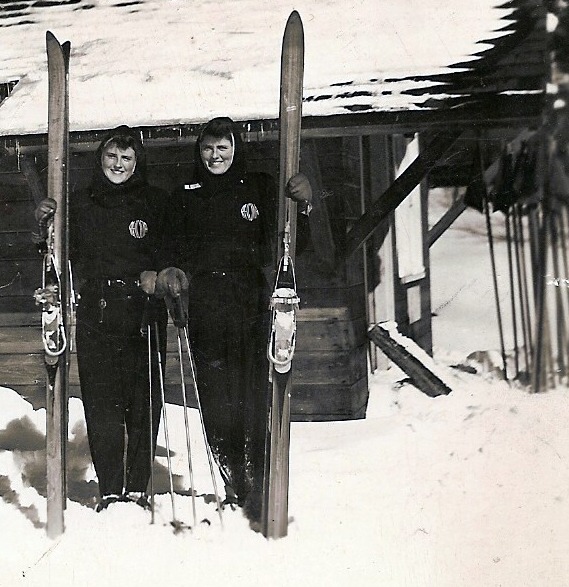
Rhona and Rhoda Wurtele, identical twin sisters, were pioneers in alpine skiing in Canada in the 1940's and 1950's, winning numerous national and international competitions. They set the stage for a long line of World and Olympic Champions in this sport.
Collection: Private Collection: Rhona and Rhoda Wurtele
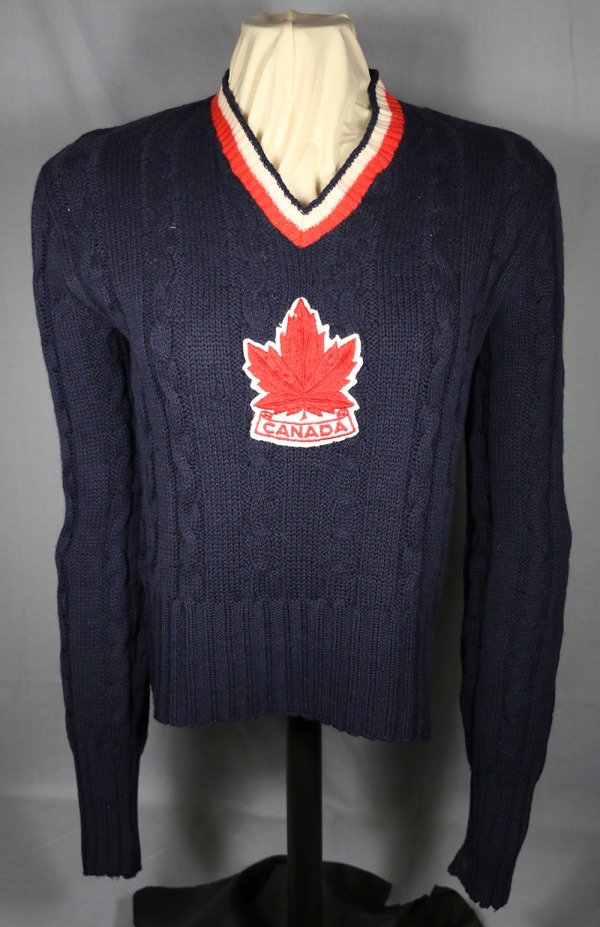
The Wurtele sisters competed at the 1948 Olympic Winter Games in St. Moritz. The team wore this sweater with the Canadian maple leaf crest. Their determination and accomplishments inspired the next generation of skiers and still inspire them today.
Collection: Canada's Sports Hall of Fame
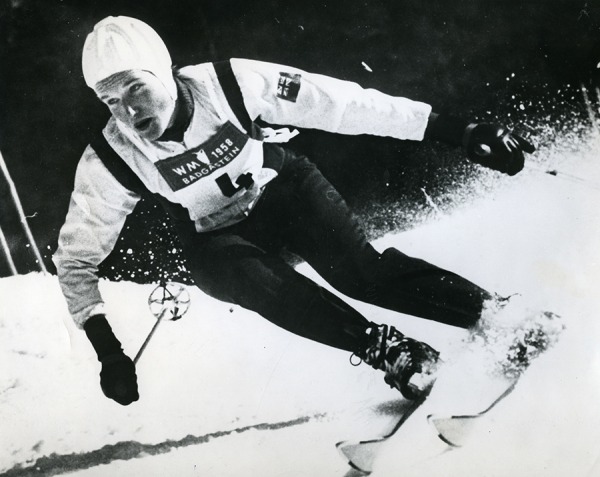
Lucile Wheeler was the first Canadian to win an Olympic medal in alpine skiing, taking the bronze medal in the downhill event at the 1956 Olympic Winter Games. She followed that with two gold medals at the World Championships in 1958. She was a pioneer in the sport, beginning the long tradition of international excellence for women.
Collection: Canada's Sports Hall of Fame
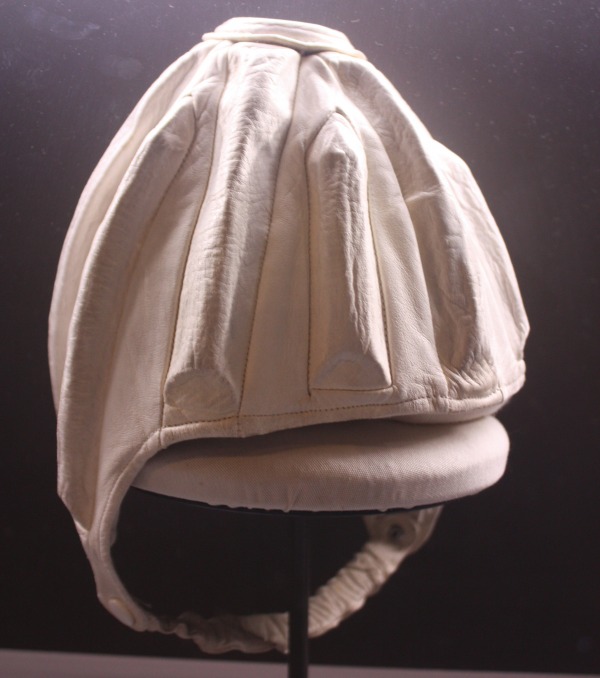
Lucile Wheeler trained and raced by herself in Europe. Unlike today alpine skiers wore little protective gear in the 1950's. This early ski helmet is made of leather and provides little protection for the skier. Lucile saw it being worn in Europe while she was competing there and decided to try one for herself. Her resourcefulness helped promote the sport in Canada.
Collection: Canadian Ski Museum
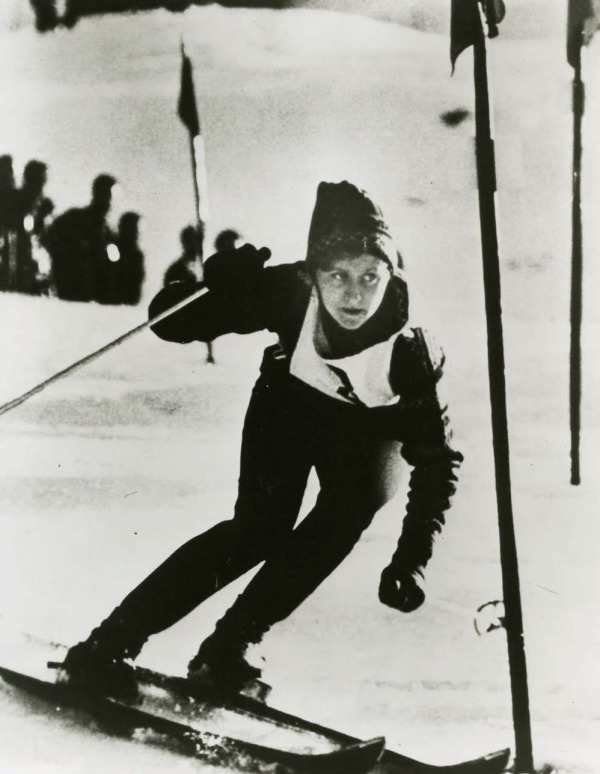
Lucile Wheeler and Anne Heggtveit trained and competed together in the 1950's. Inspired by Lucile's accomplishments, Anne went on to win Canada's first gold medal in alpine skiing at the 1960 Olympic Winter Games in the slalom event. "When you look back at the Canadian women skiers, we all overlapped. Lucille was on the team with me. Nancy [Greene] was one after me and was on the team with me. Betsy Clifford was with Nancy. Each one of us made up a whole chain of Canadian skiing racers."
Collection: Canada's Sports Hall of Fame
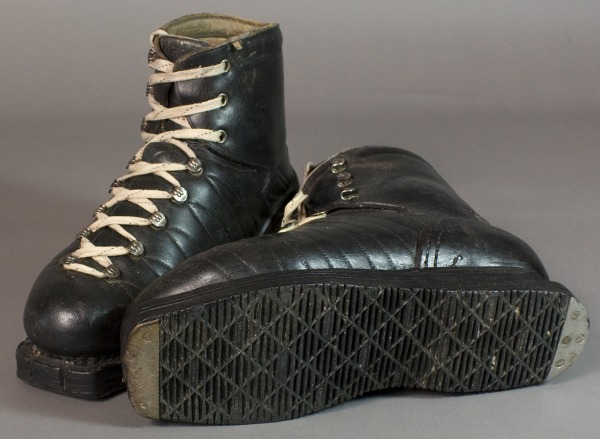
Early alpine skiers used wooden skis and poles and wore leather boots. Anne wore these boots during her competitive career. Her competitive spirit and natural talent led her to the top of the podium and inspired Nancy Greene in her career.
Collection: Canada's Sports Hall of Fame
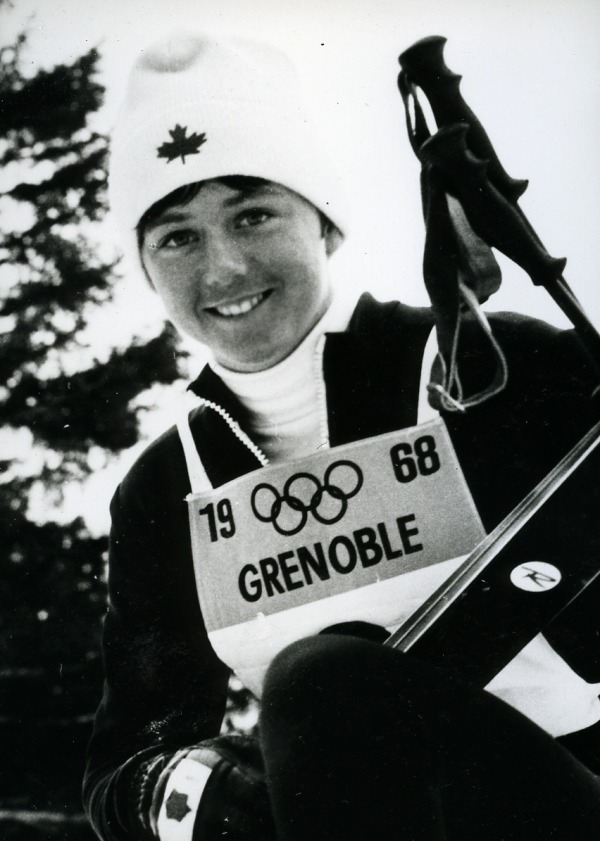
Nancy Greene dominated women's alpine skiing in the late 1960's, winning the inaugural World Cup in 1967 and a second title in 1968. She won two Olympic medals, gold in the giant slalom and silver in the slalom events at the 1968 Olympic Winter Games. Her nickname was "the Tiger" for her aggressive style of skiing and passion. Dedicated to the promotion of her sport, she established the Nancy Greene Ski League as an entry level program for young skiers.
Collection: Canada's Sports Hall of Fame
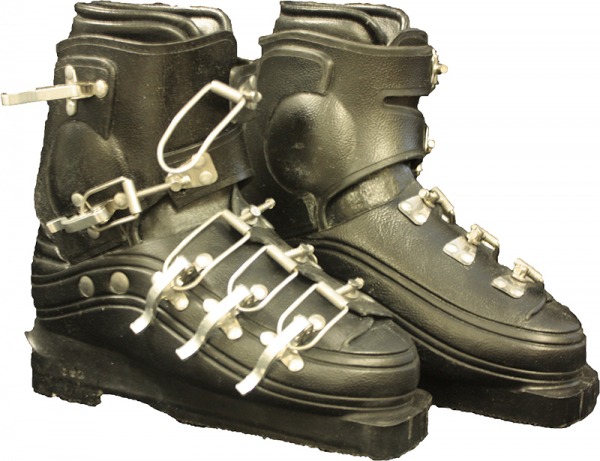
There were many improvements to the equipment in alpine skiing. Nancy Greene's boots are made of different materials and have metal clasps, as opposed to the leather boot with laces used by previous skiers. As the boots gave more support to the foot, the skier was able to go faster and make smoother turns.
Collection: Canadian Ski Museum
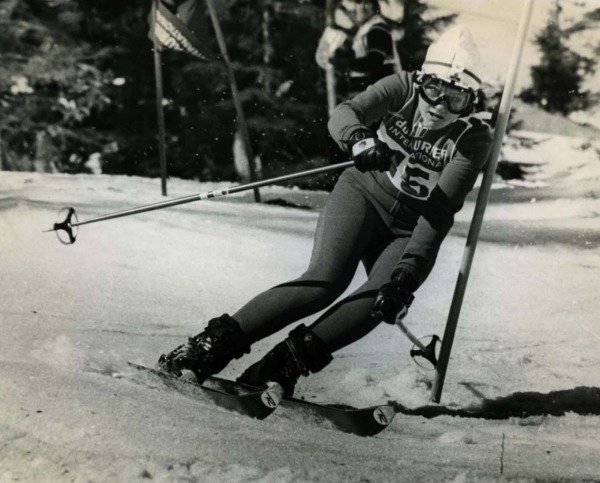
In 1968 at age 14 Betsy Clifford became the youngest Canadian skier to compete at an Olympic Games. Two years later she was the youngest world champion when she won the giant slalom event. She was her own person and refused to accept the media's designation as the next Nancy Greene. Her strong will and her focus were her hallmarks.
Collection: Canada's Sports Hall of Fame
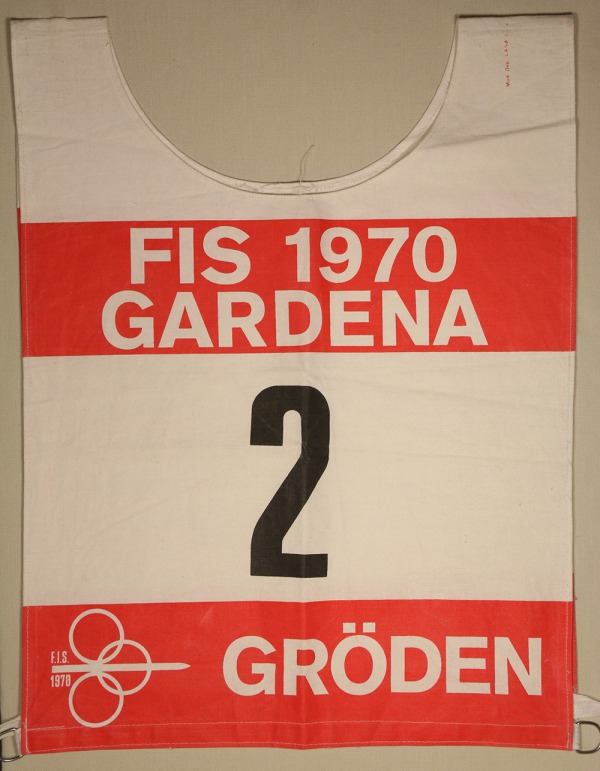
Betsy Clifford wore this race bib when she won the Silver medal at the 1974 World Championships. She considers this to be the ultimate achievement in her career, coming after many problems, including injuries, that she encountered. Her perseverance and determination is the story of her career.
Collection: Canadian Ski Museum
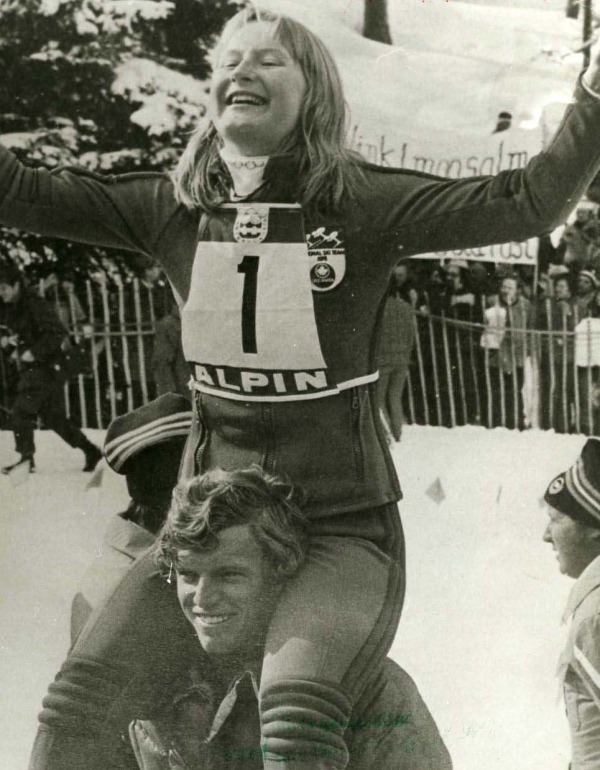
Kathy Kreiner sits on the shoulder of team mate Jungle Jim Hunter after winning the Giant Slalom event at the 1976 Olympic Winter Games. The Canadian team worked together and had a strong spirit of camaraderie. Kathy's team mates included the Crazy Canucks - Ken Read, Dave Irwin and Dave Murray.
Collection: Canada's Sports Hall of Fame
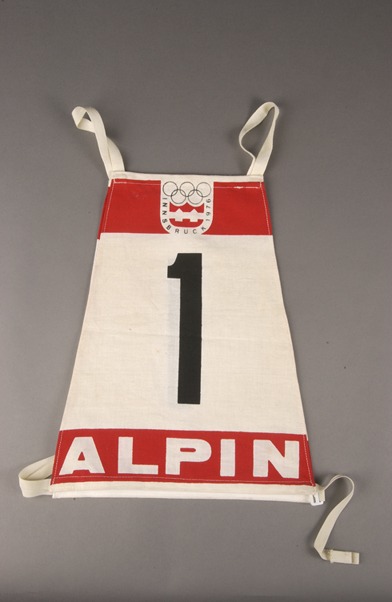
Kathy Kreiner wore this number one bib for the giant slalom. She was worried about going first but her teammate Jim Hunter encouraged her by pointing out she had the best position as the track deteriorated quickly after the first skiers. She won her Gold medal by a mere 12/100ths of a second. "It was the most perfect skiing run that I ever had."
Collection: Canada's Sports Hall of Fame
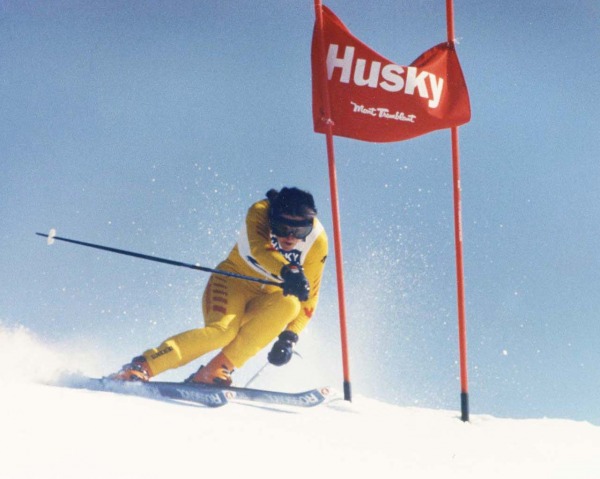
Over the course of her career Gerry Sorenson achieved six podiums at the World Cup level and won the 1982 World Downhill Championship. She was always involved in sports and believes that any sport makes a person competitive. She discovered skiing came to her naturally and that ability and belief in herself led her to become one of Canada's top skiers.
Collection: Canada's Sports Hall of Fame
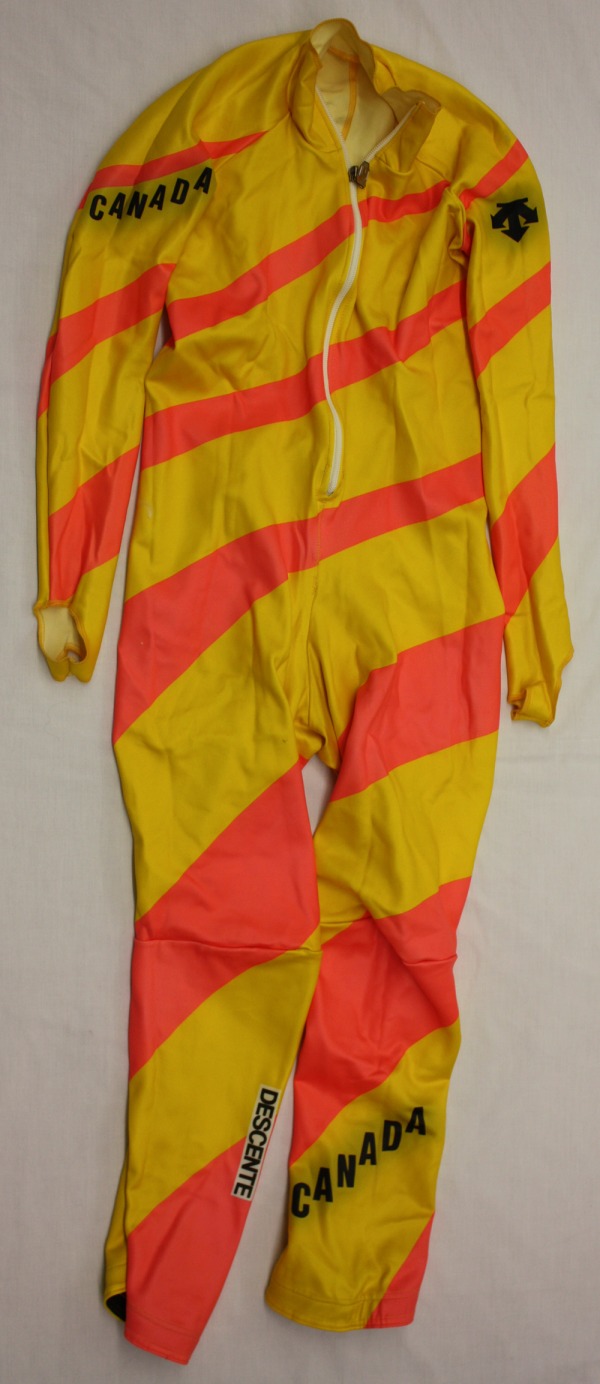
Gerry Sorenson wore this race suit at the 1984 Olympic Winter Games. She fell in her first run in the women's downhill when her ski binding released. The run was cancelled after the next skier due to the fog that reduced visibility to almost zero. She competed again the next day and although she did not win a medal she showed her courage and passion in her run.
Collection: Canada's Sports Hall of Fame
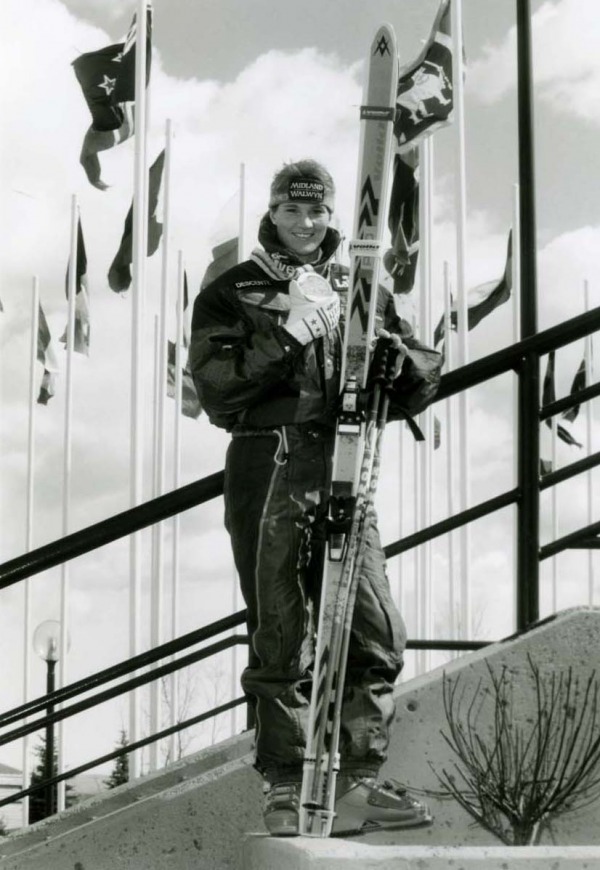
Kerrin Lee-Gartner was a speed specialist, competing in the downhill and Super G events. At the 1992 Olympic Winter Games she won the gold medal in the Downhill, a first for Canadian skiers. She put together the winning ingredients that day of talent, experience and courage. "I put so much into that race, to win it was the most amazing feeling."
Collection: Canada's Sports Hall of Fame
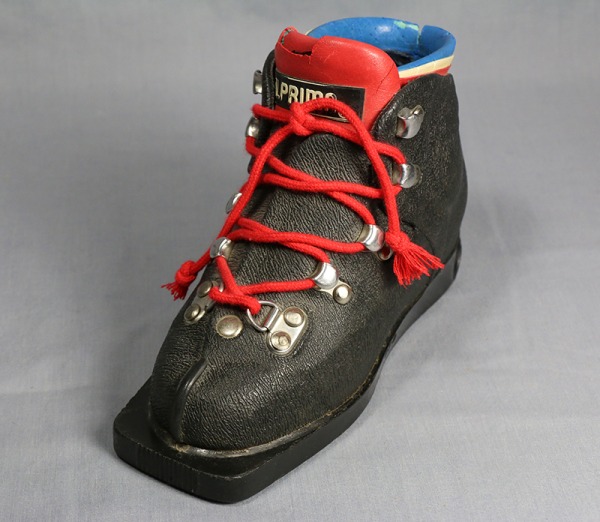
Kerrin Lee-Gartner, as with most skiers, started skiing at an early age. This is the ski boot she wore when she was age three. She was inspired by Nancy Greene, who also lived in the town of Rossland , when she was a child and like her hero she went on to win Olympic Gold. "In a way, Nancy's success, and the fact that she came from the same town, gave me permission to dream that I could attain that same level, that something like that was achievable.
Collection: Canada's Sports Hall of Fame
Previous Next


